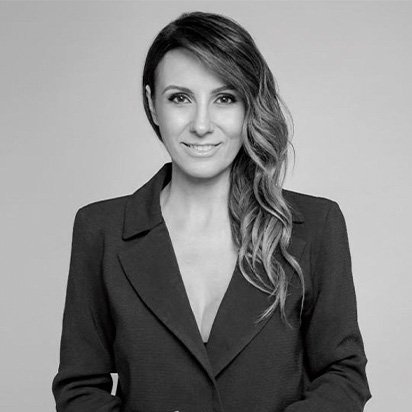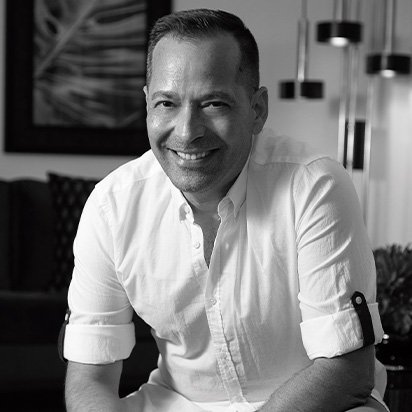
From romantic to bohemian
Micaela Oliveira
What makes us stop and look?
Victor Guerra
Founder of Victor Guerra Arquitetura e Design de Interiores studio

What makes us choose one item over another? It’s a shape, a colour, a material... And these are some of the elements that form the basis of product design. Often, we choose on this basis, without thinking about any of the other basic elements of design, such as its function and use in everyday life.
It’s often a tricky relationship for designers to manage - finding the balance between the various base elements. With the development of 3D, everything seems possible in a conceptualised image. But can we go from the beautiful, perfect image of 3D to the construction of that item? From the stage of creativity, we quickly move on to the reality of what materials and machinery, or labour, allow us to make or build something. Then it’s back to the drawing board and the important phase of compromises, where the monetary aspect of the item also comes into play. How many times have we thought a product was expensive simply because we saw a finished product without being aware of the whole process? These basic premises are also used in architecture and interior design. Interior design and product design, more specifically furniture design, are two creative and interconnected areas, but with different focuses. Both are related to the creation and organisation of spaces, both residential and commercial. While interior design focuses on the creation, harmonisation and optimisation of environments and spaces, taking into account aesthetics, functionality and comfort, through furniture, colours, textures and accessories; objects and lighting aim to harmonise the elements and create a pleasant and functional atmosphere that reflects the personality and needs of the users.
Product-furniture design will focus on the design and production of furniture of different styles, materials and functions, so the product-furniture designer needs to have in-depth knowledge of production, planning, aesthetics and ergonomics in order to create functional, innovative and aesthetically pleasing objects.
In today’s world, sustainability and environmental impact are also key elements to be taken into account in every product. At every creative step, the designer has to take all these parameters into account in order to achieve a successful product.
To summarise, while interior design focuses on interior spaces and the user experience, product design deals with the creation of the physical objects that will fill these spaces. I believe that in the very near future, with the proliferation of Artificial Intelligence in these two areas, many of the obstacles that both interior and product designers have encountered over the years will be overcome, thus reducing the divide that exists between what works on paper/in the image and materialisation in reality.
It’s often a tricky relationship for designers to manage - finding the balance between the various base elements. With the development of 3D, everything seems possible in a conceptualised image. But can we go from the beautiful, perfect image of 3D to the construction of that item? From the stage of creativity, we quickly move on to the reality of what materials and machinery, or labour, allow us to make or build something. Then it’s back to the drawing board and the important phase of compromises, where the monetary aspect of the item also comes into play. How many times have we thought a product was expensive simply because we saw a finished product without being aware of the whole process? These basic premises are also used in architecture and interior design. Interior design and product design, more specifically furniture design, are two creative and interconnected areas, but with different focuses. Both are related to the creation and organisation of spaces, both residential and commercial. While interior design focuses on the creation, harmonisation and optimisation of environments and spaces, taking into account aesthetics, functionality and comfort, through furniture, colours, textures and accessories; objects and lighting aim to harmonise the elements and create a pleasant and functional atmosphere that reflects the personality and needs of the users.
Product-furniture design will focus on the design and production of furniture of different styles, materials and functions, so the product-furniture designer needs to have in-depth knowledge of production, planning, aesthetics and ergonomics in order to create functional, innovative and aesthetically pleasing objects.
In today’s world, sustainability and environmental impact are also key elements to be taken into account in every product. At every creative step, the designer has to take all these parameters into account in order to achieve a successful product.
To summarise, while interior design focuses on interior spaces and the user experience, product design deals with the creation of the physical objects that will fill these spaces. I believe that in the very near future, with the proliferation of Artificial Intelligence in these two areas, many of the obstacles that both interior and product designers have encountered over the years will be overcome, thus reducing the divide that exists between what works on paper/in the image and materialisation in reality.
